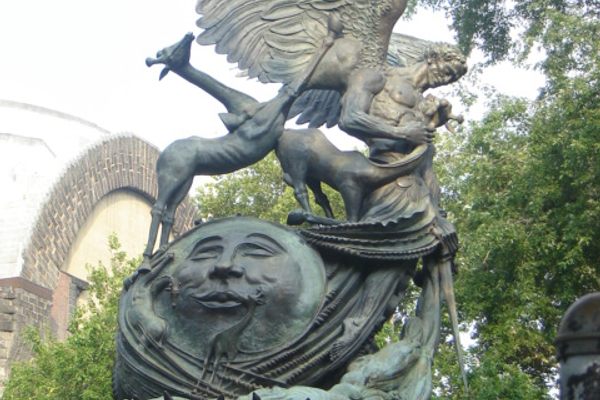About
Just five years before his death, Diego Rivera finished one of his most intriguing works, la Fuente de Tláloc. Although strikingly different in medium from most of his work, the massive tiled fountain beautifully captures the essence of Native Mexican spirit and art that is so often depicted in his paintings.
Known best for his murals, which he painted in Mexico, Europe and the United States, Rivera began a project in 1952 to improve the infrastructure of Mexico City, beginning with the municipal water system. Created at the head of the Lerma River leading out to the city's reservoirs, Rivera created a massive tiled sculpture of the god of Rain, Tláloc, that spanned a pool 100 feet across.
Constructed lying on his back, water used to rush over the god Tláloc, until a pipe diverted the flow of water away from the fountain. Rivera's work of art then slowly decayed until it was eventually closed off for over a decade at the turn of the century. Finally, in 2010, the fountain, murals and tile work of the Mexican master were restored and visitors began to visit the unique Fuente de Tláloc.
Along with the fountain, Rivera also built and decorated the Carcamo, a massive tank that diverted water through the fountain, and was used to control water levels. When the fountain was refinished, the Carcamo and its elegantly painted floors were touched up, letting Rivera's work for Mexico City shine as a gallery and piece of artful infrastructure. The cost to enter the gallery is 35 pesos but the fountain is free to view.
Related Tags
Know Before You Go
When looking at the mural "Water, the origin of life" you will notice that Rivera portrayed quite a few salamander/newt-like creatures surrounding the male and female human figures. These animals are none other than the famous Axolotl (Ambystoma Mexicanum), a type of neotenic (meaning staying in larval state until adulthood, kind of like a "forever young") salamander found only in the lake of Xochimilco and currently a critically endangered species. These animals were included by Rivera in the mural due to the symbolic role they played to the Aztec civilization, which considered them a living embodiment of the god of lightning and death, Xolotl.
NEW - Yucatan: Astronomy, Pyramids & Mayan Legends
Mayan legends, ancient craters, lost cities, and stunning constellations.
Book NowCommunity Contributors
Added By
Published
December 28, 2011

















































